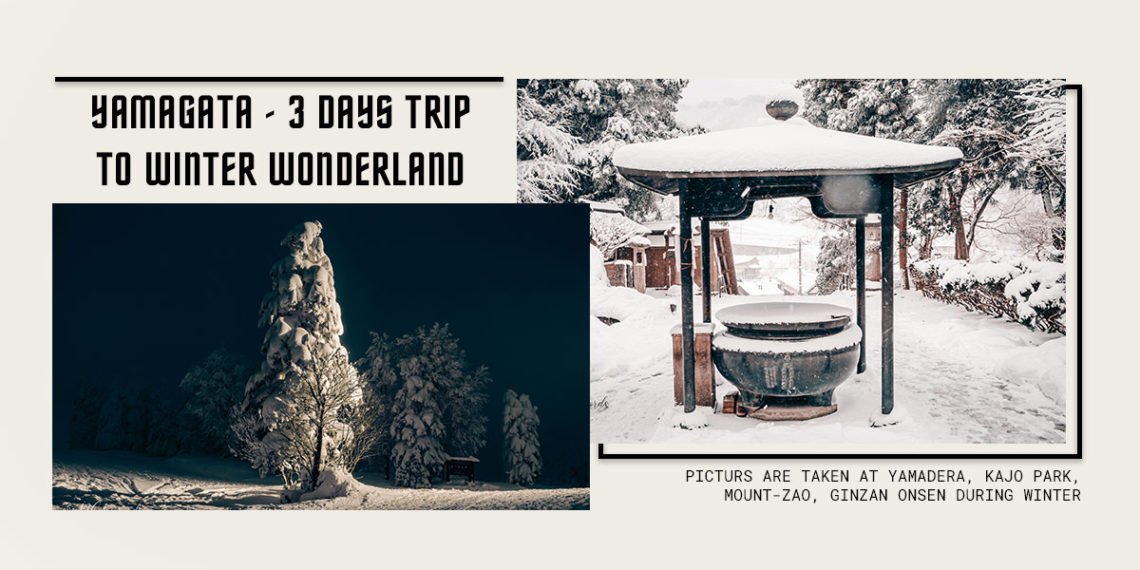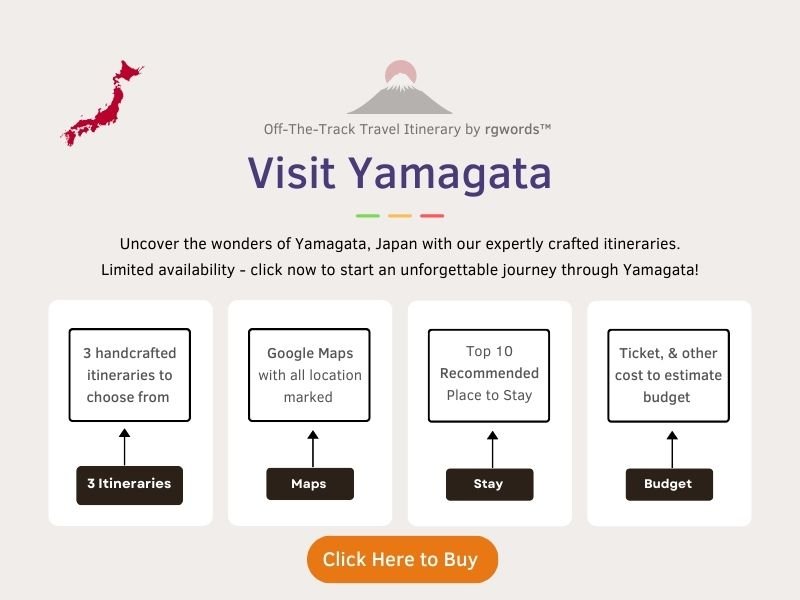Yamagata Prefecture is situated in the north east part of Japan or southern part of Tohoku region of Japan. This prefecture lying along the Sea of Japan offers natural beauty via hot springs, vast agricultural lands and mountain ranges throughout the four seasons.
Although one can wish to opt for Yamagata’s famous cherry picking festival, I embraced it during winter season. In this post, I will talk about visiting Yamagata during winter season and things we enjoyed during our trip.
Being lived my whole life in hotter temperatures, snow has always fascinated me, although sometimes it gets bit scary. Our last trip was one day trip to Mount Tsukuba, though it was autumn end but started getting cold that time. After seeing many places in Japan, I can say Yamagata is one of the most serene place to visit in Japan. Also, Yamagata can be visited in spring or golden week as well. 🙂
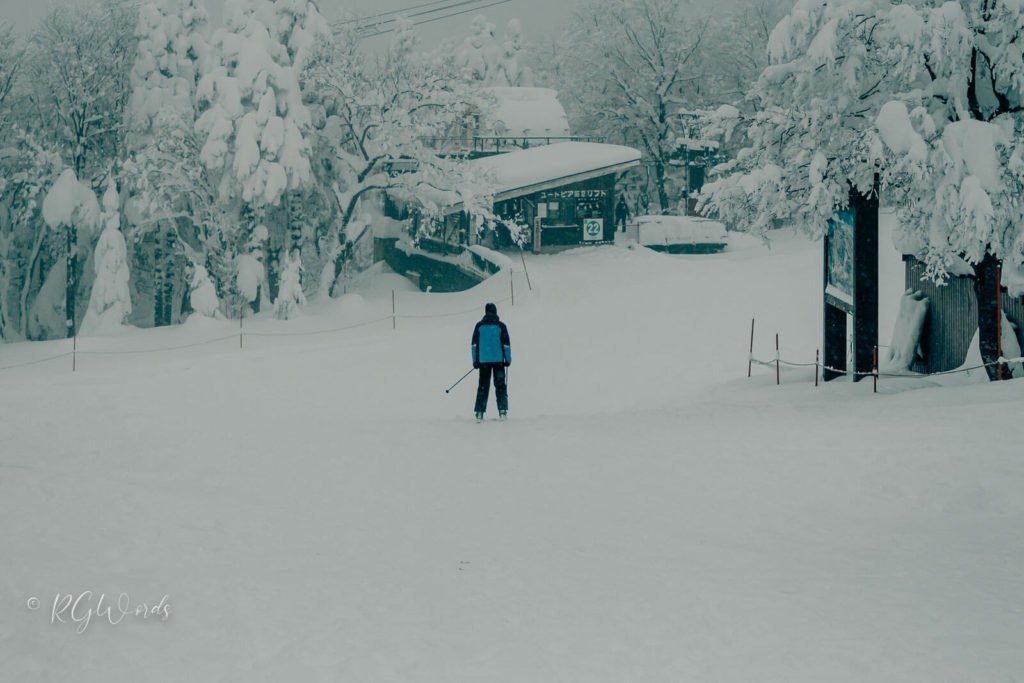
This Yamagata winter travel blog and itinerary is specially for those who loves to go on an adventurous Yamagata winter trip and enjoys sports, nature and landscape photography.
JR East offers a 3-day pass especially for foreigners in Japan. We bought this pass beforehand from Tokyo station to avoid any hassle and delay during morning on our first day.
Yamagata 3 Days Itinerary and Things to do
- First Day – Yamagata city – Yamagata Castle and Kajo Park, Yamadera – Risshaku-ji Temple
- Second Day- Zao Onsen, Skiing, Cable Car to Snow Monsters, Night Lights
- Third Day – Ginzan Onsen, Waterfall, Nightlights
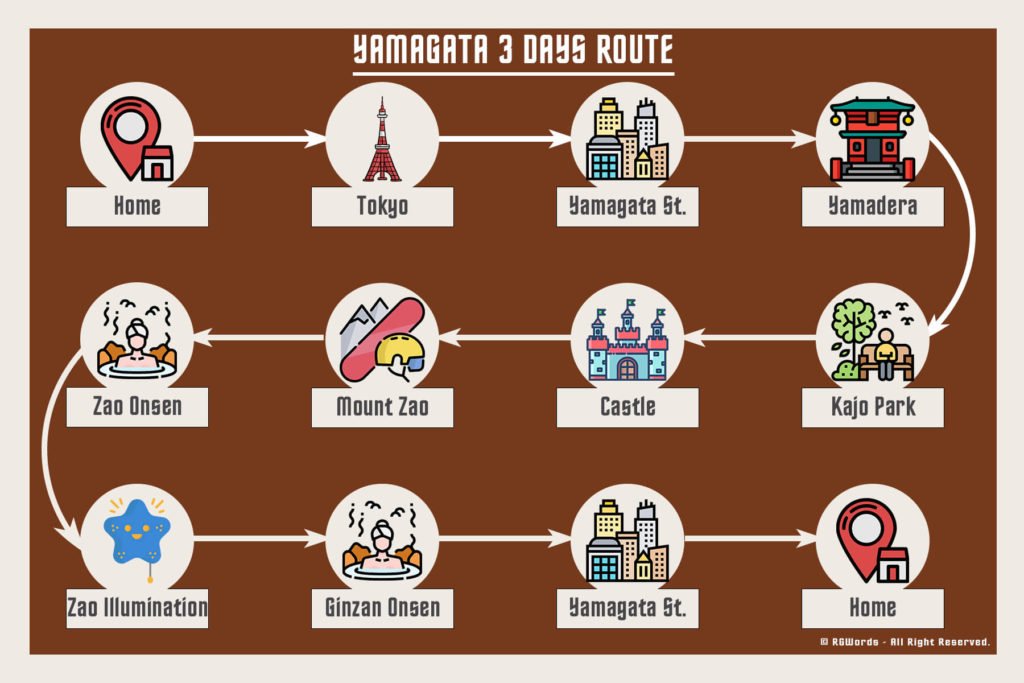
This is one of the beautiful places in Japan for Winter Landscape Photography you should not miss. Here, you can expect urban landscape photography and at the same time nature photography experience. The Nature, Mountains, Hot Spring Onsen and Lakes make Yamagata perfect destination for photographers.
Walk Through Our Journey
Day 1 : Yamagata city
There are frequent Shinkansen (High speed bullet trains) from Tokyo to Yamagata station, you can choose it as per your convenience. Although it’s always better to start your day early to cover most of the places during the daytime. Honestly, Japan trains and stations always give unique experiences when you travel different train lines.
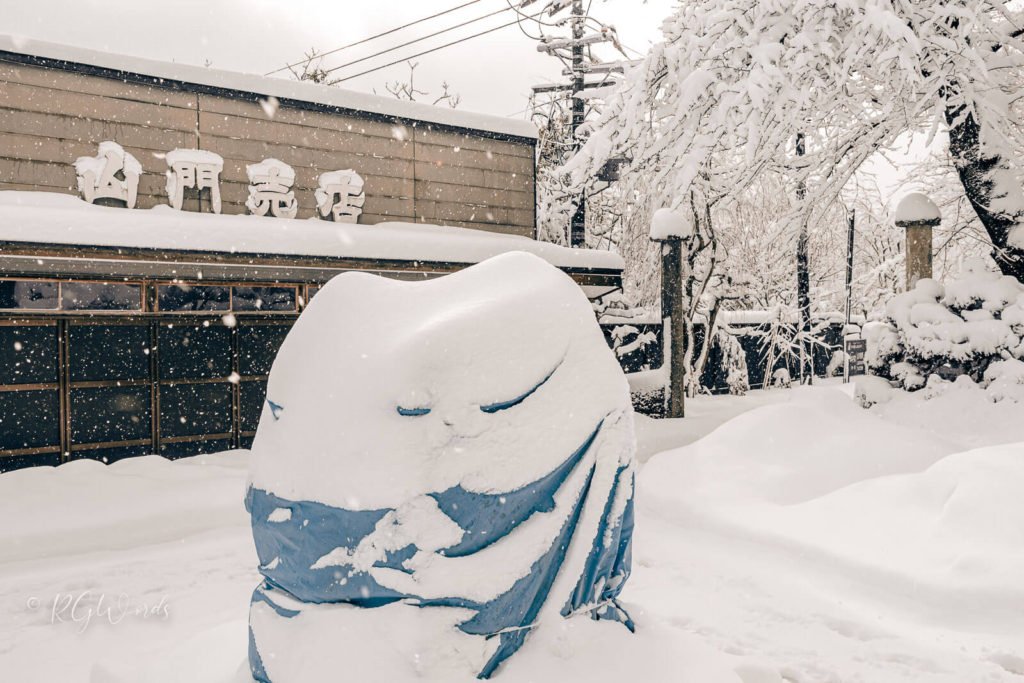
It was heavy snow storm when we visited there. Our Shinkansen was delayed by half an hour and we reached around 10 am. We chose to visit Yamadera and local Yamagata city on our first day. After reaching Yamagata station, we left luggage at our nearby hotel (Hotel Route-Inn) and started the trip. Coin Lockers at the station are also good alternative, if your hotel is far away.
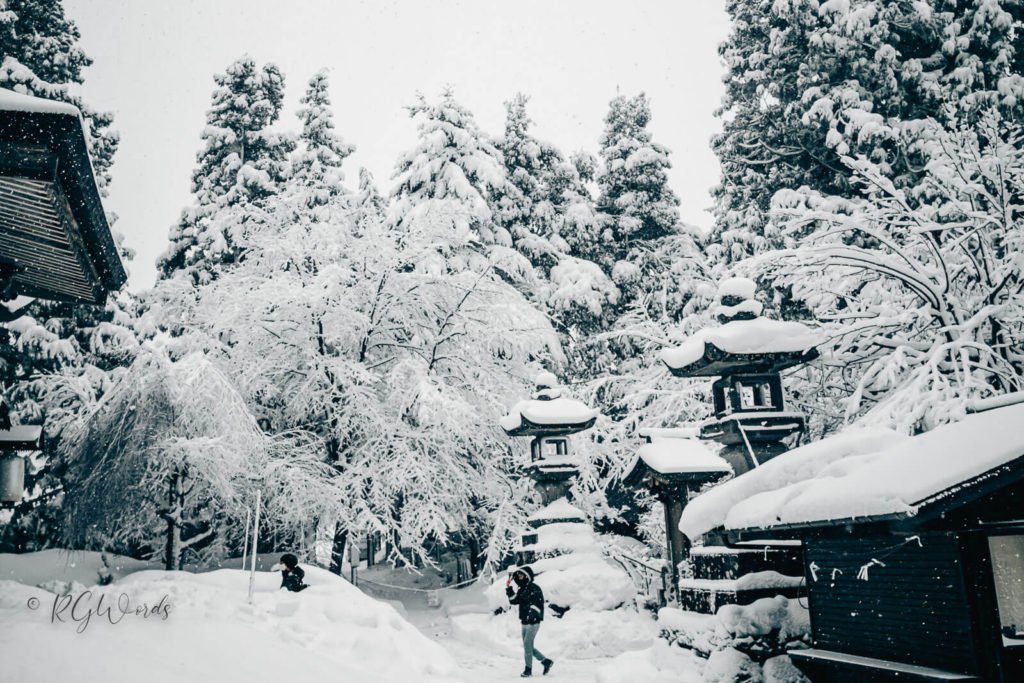
There is a direct JR train from Yamagata station to Yamadera station and then 6 min walk to the famous Risshaku-ji temple. All trains were delayed that day due to the snow storm, so we opted for taxi (costs around 6000 yen one-way).
Why Visit Yamadera
Risshaku-ji temple at Yamadera is one of the most magnificent temples in Tohoku region of Japan, opened in 860 and later in 2018 designated as Japan Heritage. One of the famous Japanese poet, Matsuo Basho quoted Yamadera area as “scenery that purifies the spirit in the silence”.
Yamadera contains roughly 30 large and small temple buildings, covered by a total 1015 stone steps. Among them, Konponchudo Hall, Nokyodo Hall, Kaisando Hall and Godaido Hall are not-to-miss unique ones.
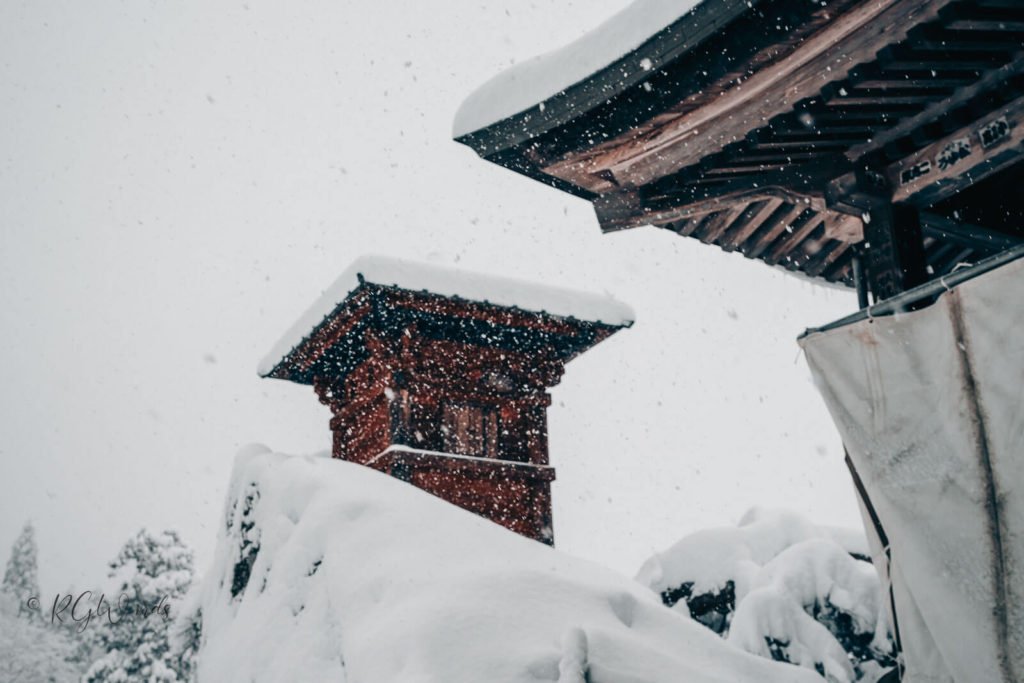
When we reached Yamadera, it was snowing heavily and steps were difficult to be climbed on. Lifting our spirits up, we marched towards the steps and gradually became acquainted with this snowy trek. While climbing those 1015 steps, you will find many photographic scenic spots, don’t miss to stop by and capture the beauty. Covering the whole 1.9 square meters of Yamadera area will take approximately 2.5 to 3 hours. There are few eateries near the foot of the mountain, famous for Dashi Soba Noodles and Tamakonnyaku (Ball-shaped konjac arrowroot jelly).
Speciality about Kajo Park
Returning back to Yamagata city, we carried on our journey for City Center Area of Yamagata. We visited a local museum Bunshokan which is constructed in British Neo-renaissance style with red bricks and granites. Next stop was Kajo Park which is recognised for ruins of Yamagata Castle. Famous ancient work includes the front gate, Ote Bridge, and Statue of Mogami Yoshiaki.
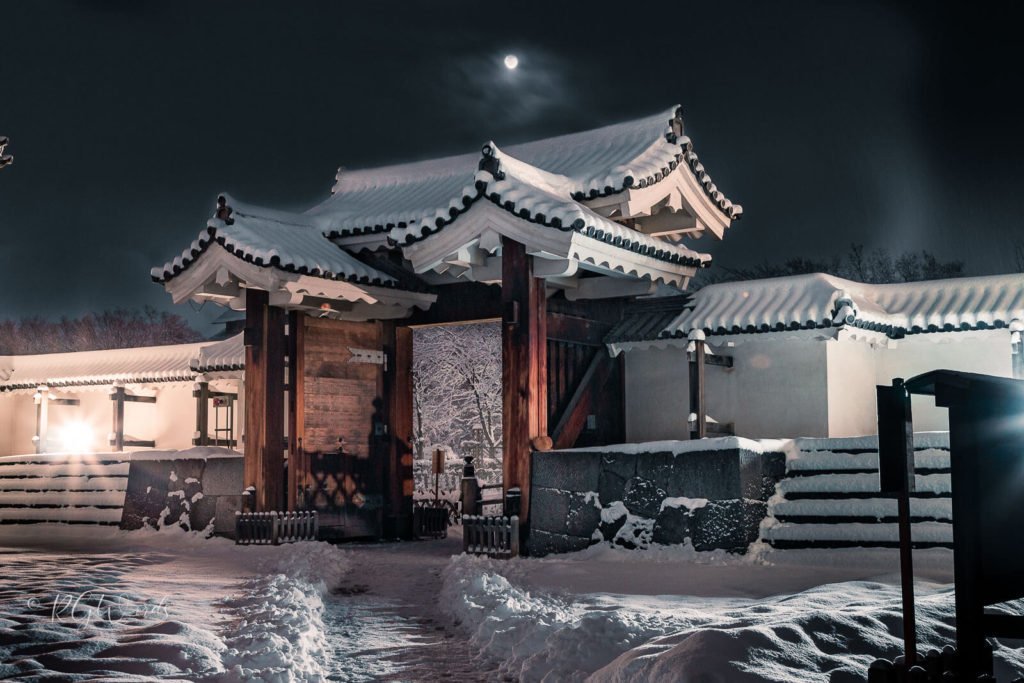
We enjoyed strolling around this urban park during the sunset. Later, we toast our evening meal in a yatai restaurant at Nanuka-machi famous for the lights of red lanterns. Do savour the local Yamagata Beef (by fattened black wagyu cattle) and Yamagata sake.
Day 2 : Zao Onsen Skii Resort
Mt. Zao at Yamagata in winter is majorly famous as largest Ski resort with good quality powder snow, 14 slopes, 12 courses and 32 lifts. Skiing at Zao Area is highly recommended if you are visiting from mid-December to February. Also, this area is covered by rare to watch huge Winter/Snow monsters which attracts tourists around the world. The magnificent monsters glittering in the daylight can be leisurely appreciated by 2 ropeways and observation desks between the stations. During evening, Winter Night Cruising car are available which takes you to Snow monster Illusion Corridor Tour and watch the illuminations closely.
Access Mount Zao and Rope Way
To reach Zao Area, we took bus from Yamagata station which took around 40 mins. We purchased ticket at Zao Onsen Tourism Association at Yamagata station bus stop. One can also purchase combo tickets including bus tickets with cable car tickets, ropeway tickets and winter night cruising car.
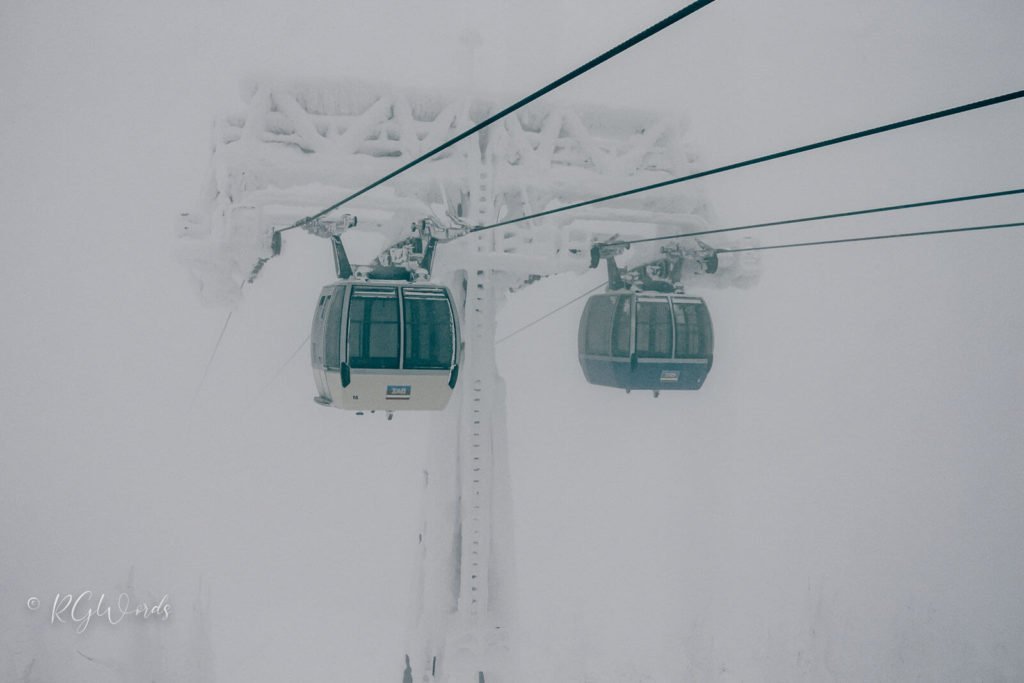
Watching snow monsters like this much closely was our one of the checklist of exploring Japan. So, we opted to drop Skiing and went straight for Ropeway. Snow Monsters Area covered by 2 ropeways, the first one starts from Sanroku Station to Juhyo Kogen Station at 1331 meter altitude.
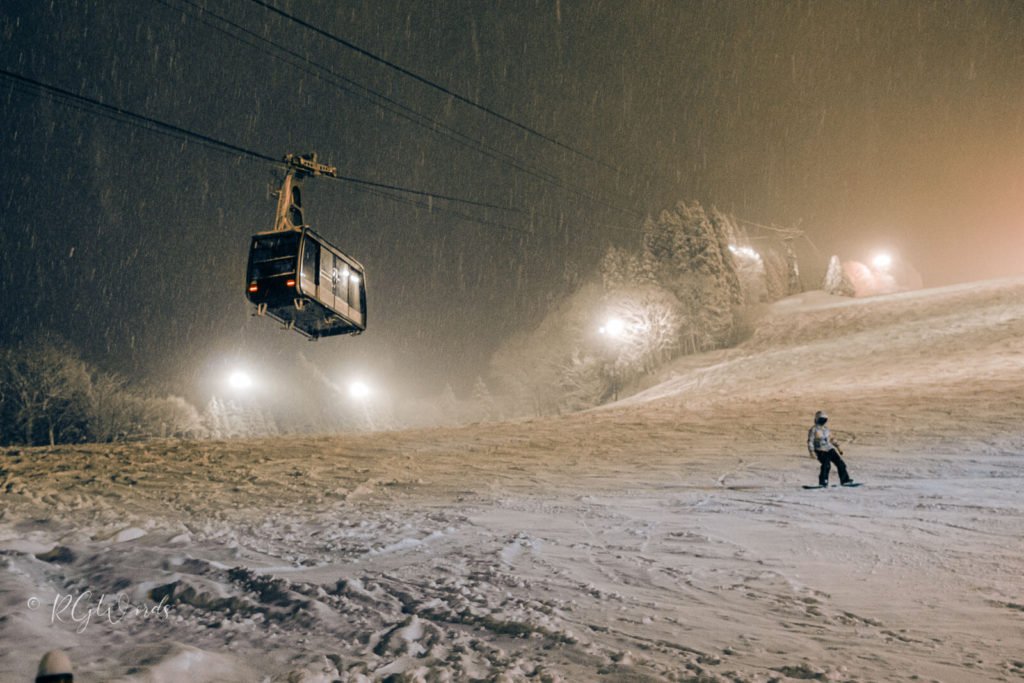
It was completely a dream world with mountains completely covered in white, continuous snowfall and large snow monsters waving greetings with the strong wind. We had lunch at a restaurant situated near to this station, which has an upper deck and offer it as observation desk for monster viewing.
 Afterwards, we took our next ropeway which took us to Jizo Sancho Station at 1661 m altitude. This ropeway covers the whole Snow Monster Area, so don’t forget to grab good spot inside the car. This area has trees grown in clusters, and thus create huge rime ice-covered trees, commonly known as “Juhyo” in Japanese. Outdoor of this station was very windy, frosty and almost zero visibility. However, there is a cafe at this station which gives outdoor view from the window seats. We enjoyed the sunset from those windows till the night illuminations were turned on.
Afterwards, we took our next ropeway which took us to Jizo Sancho Station at 1661 m altitude. This ropeway covers the whole Snow Monster Area, so don’t forget to grab good spot inside the car. This area has trees grown in clusters, and thus create huge rime ice-covered trees, commonly known as “Juhyo” in Japanese. Outdoor of this station was very windy, frosty and almost zero visibility. However, there is a cafe at this station which gives outdoor view from the window seats. We enjoyed the sunset from those windows till the night illuminations were turned on.
Mount Zao Night Illumination
We returned back to the main station by 5 pm to join our Night Illuminator Tour. If you take this tour, check the meeting point at Zao Ropeway station. This winter night cruising car is for limited people and has heating device installed.
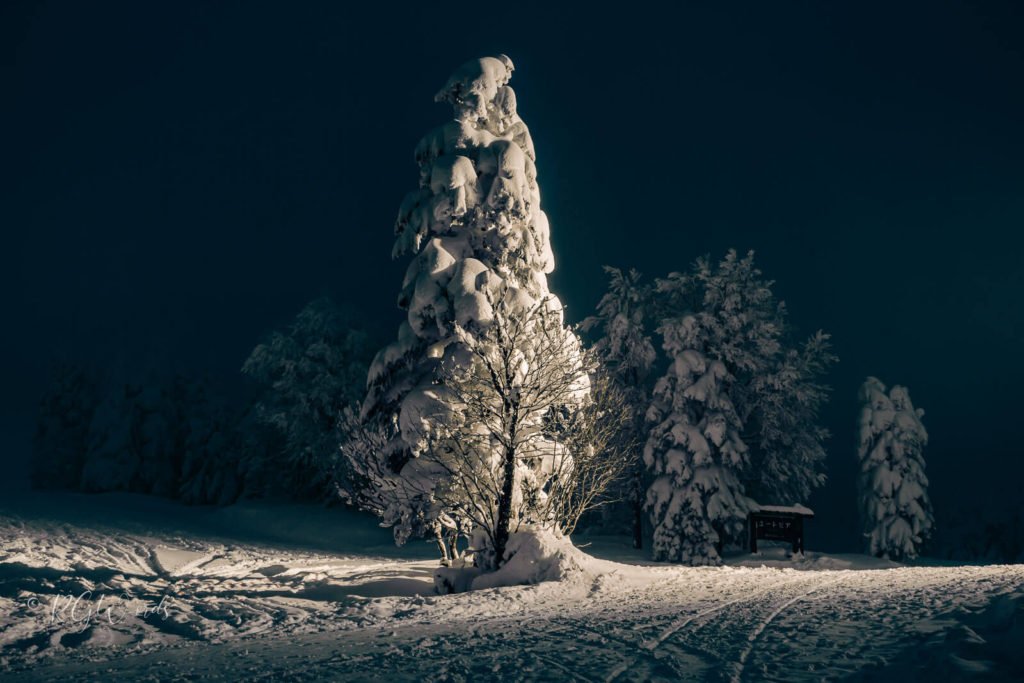
Roaming around this illuminated Snow Monster field, you can admire the lit-up, filled with rich colours and quietly staying at night as contrast with its bright silver glimmering during the daytime.
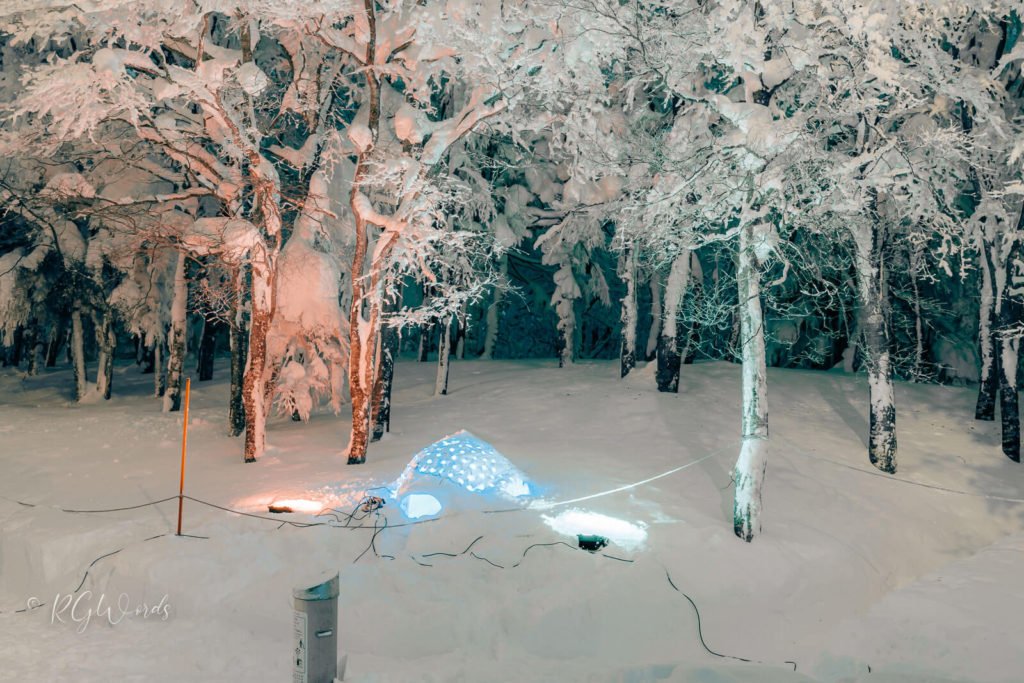
Nothing could beat a nice evening hot bath during snowy winter season. Zao Onsen offers hot springs from a strong acidic sulphur spring that is highly effective for beautiful skin and health. We went to one of the three public baths (Kamiyu, Shimoyu and Kawarayu) and rejuvenate our body. Zao Onsen also has a famous large outdoor bath, which are accessible by car or walking 20 min uphill from the main town. It is advisable to stay in one of the Yamagata winter resorts.
We came back from Zao Onsen bus station to Yamagata station by the same bus, and enjoyed our dinner at a Indian restaurant.
Day 3 : Ginzan Onsen
Ginzan Onsen is an isolated hot spring town situated in Yamagata. This onsen originally built around a silver mine, known as Silver Mountain Hot Spring. I believe this is the most prettiest hot spring town where old rustic ryokans (Japanese style hotels) exists.
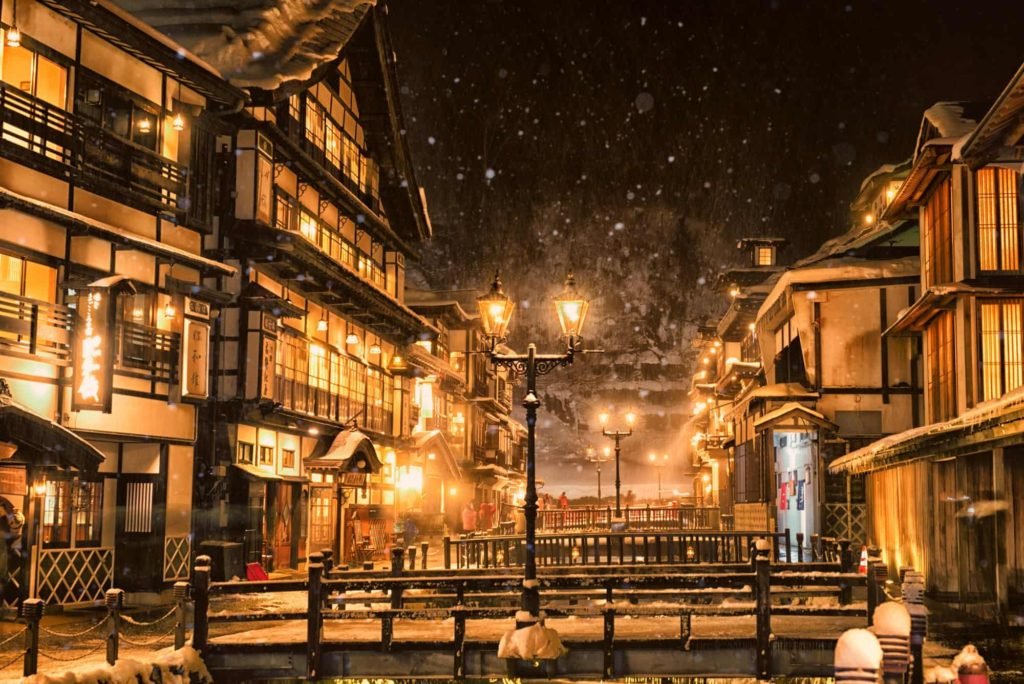
We took Shinkansen from Yamagata Station to the Oishida station, and then bus to Ginzan Onsen Town. The town is itself pedestrian-only zone and all the places are quite accessible. Taking the picturesque stroll along the Ginzan river, we first visited the Shirogane Park and waterfall at the back of the town which was quite spectacular and around 22 meter tall. Walking around 15 minutes from its base, you can find the entrance to the historic silver mining area, nobezawa-ginkodo. During the Edo period, this mining area was town’s core source of income. We enjoyed the light-up tunnel, it’s goes down around 20 meters. However, because of snowfall we couldn’t enjoy it fully.
Time for Onsen
Now it was the time for onsen bath after coming back to the town. The town has 2 public baths and one free of charge foot bath. We opted to go for a private bath at one of the public bath, Omokageyu. It costed us around 2000 yen for 50 mins. You can also choose a historic indoor bath in ryokans. They offer it even for non-staying guests during daytime with costing around 500-1500 yen. I would definitely recommend staying one night at Ginzan to enjoy the cozy ryokans and dip into the japanese culture as popularly known as onsen-kyo.
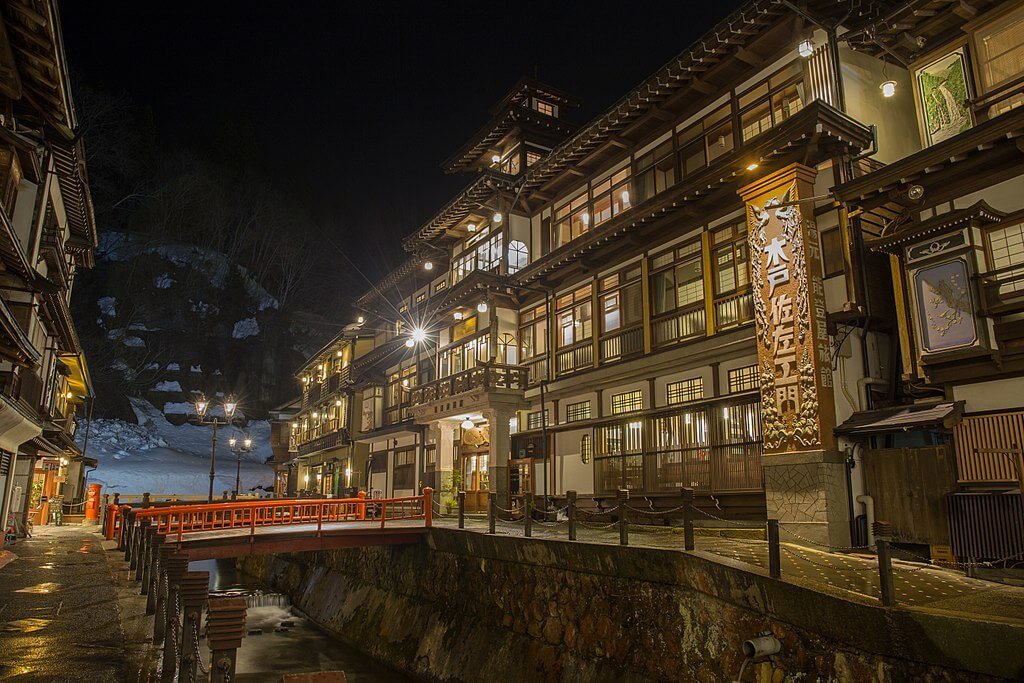
After the sunset, the whole scenery sparkles form the lit up of ryokans. Snowfall during winters add gems to this scenic riverpath with rusty wooden bridges and hot vapours from the Ginzan river. This spots is famous among foreign travellers too for photography.
Taking the evening bus from Ginzan town to Oishida station, we returned back to Tokyo by Yamagata Shinkansen with calm and soothing memories. After the trip I can confirm that Yamagata is one of the calmest cities to visit in Japan, and you will not regret it.
Important Point to Remember
- Yamadera steps and stairs are steep recommend to always use winter trekking shoes.
- Tripod and drones are now allowed at some places, so always check the signs and respect the guidelines.
- Check out Yamagata Toursim Official ( Japanese but translation available) website for latest news.
- Looking for hotel and flights booking option, Tohoku tourism website has covered most of options.
- Be Responsible traveller and avoid littering. Help to protect environment by Reducing Plastic Pollution.
